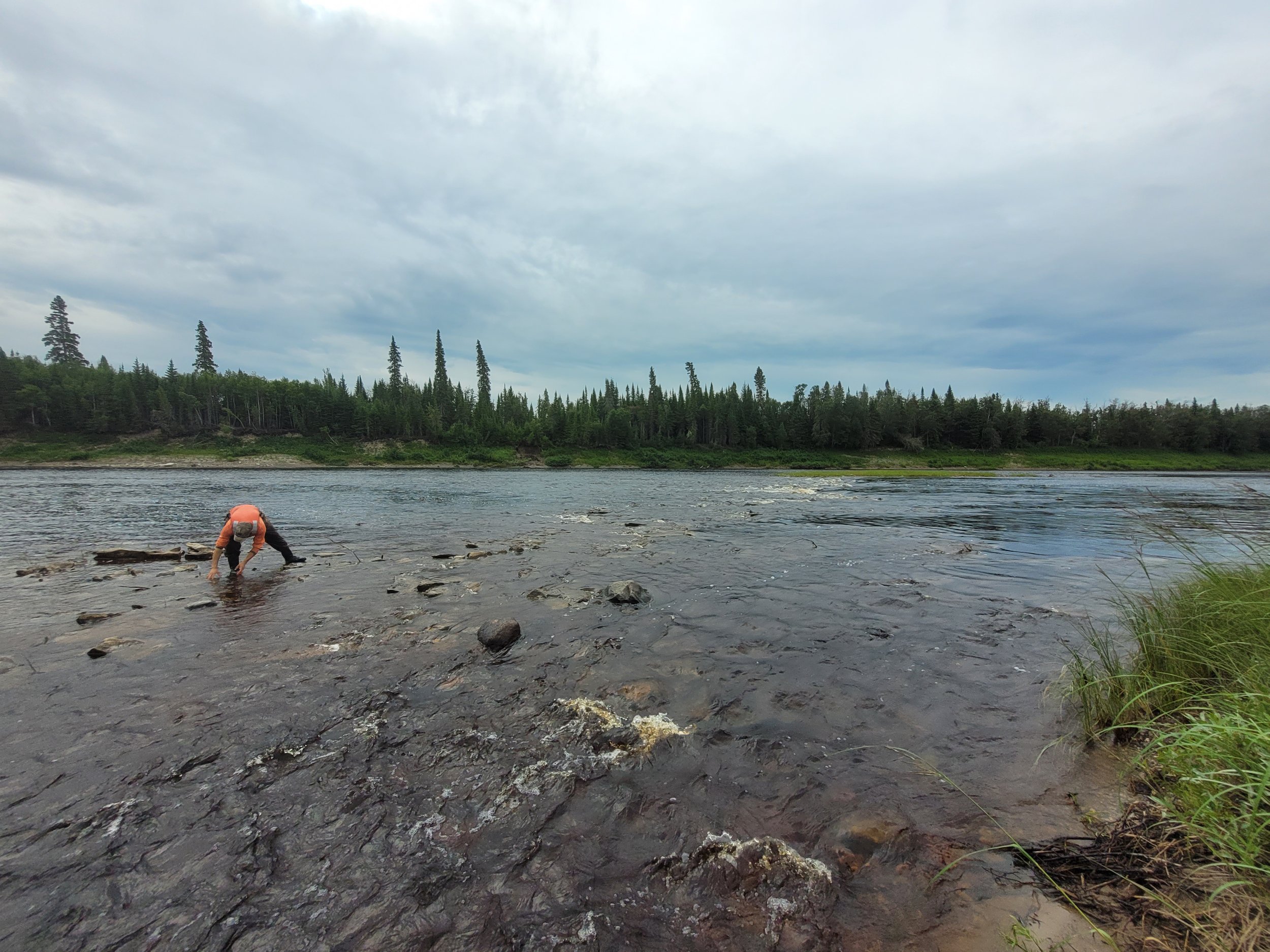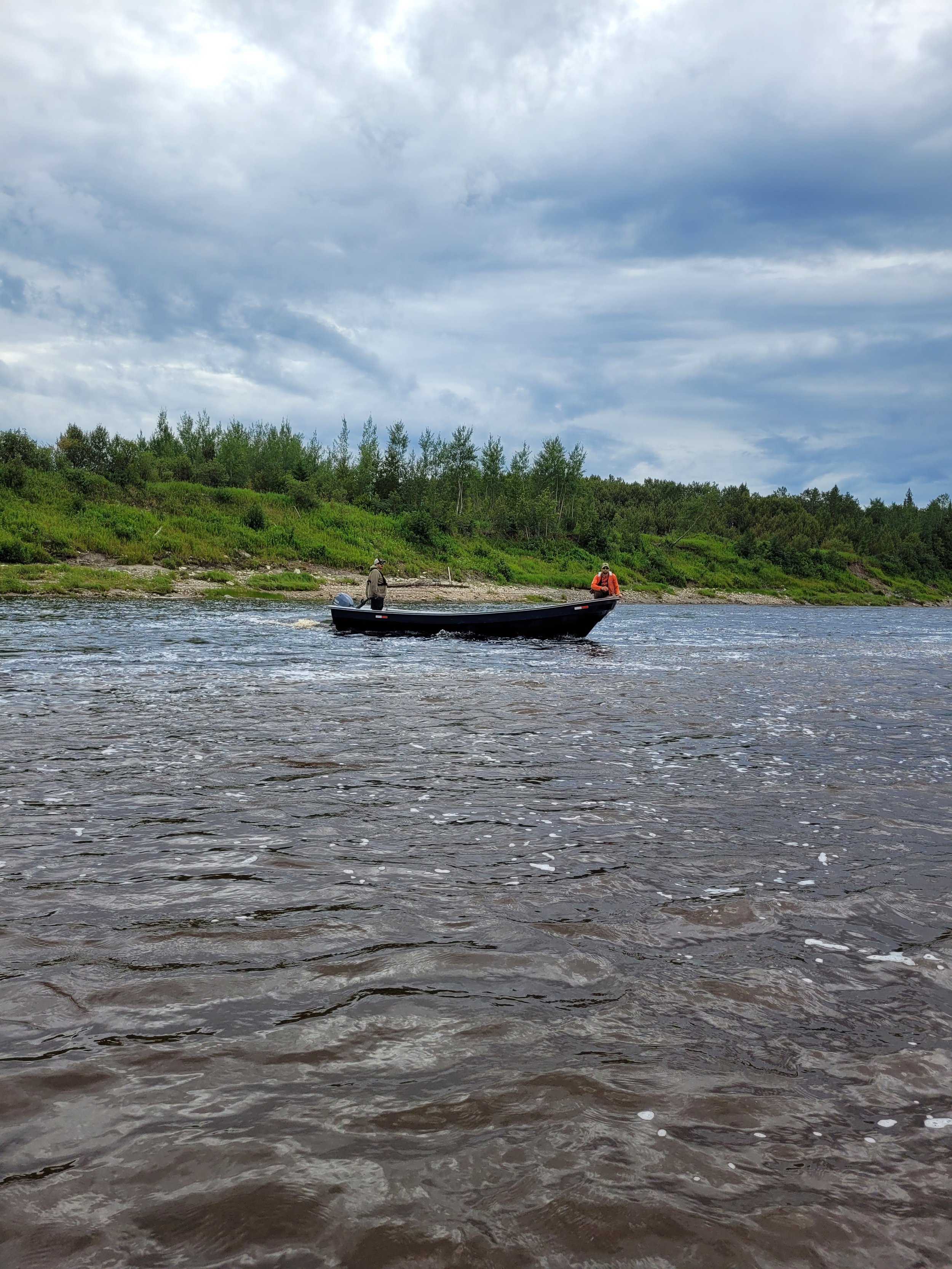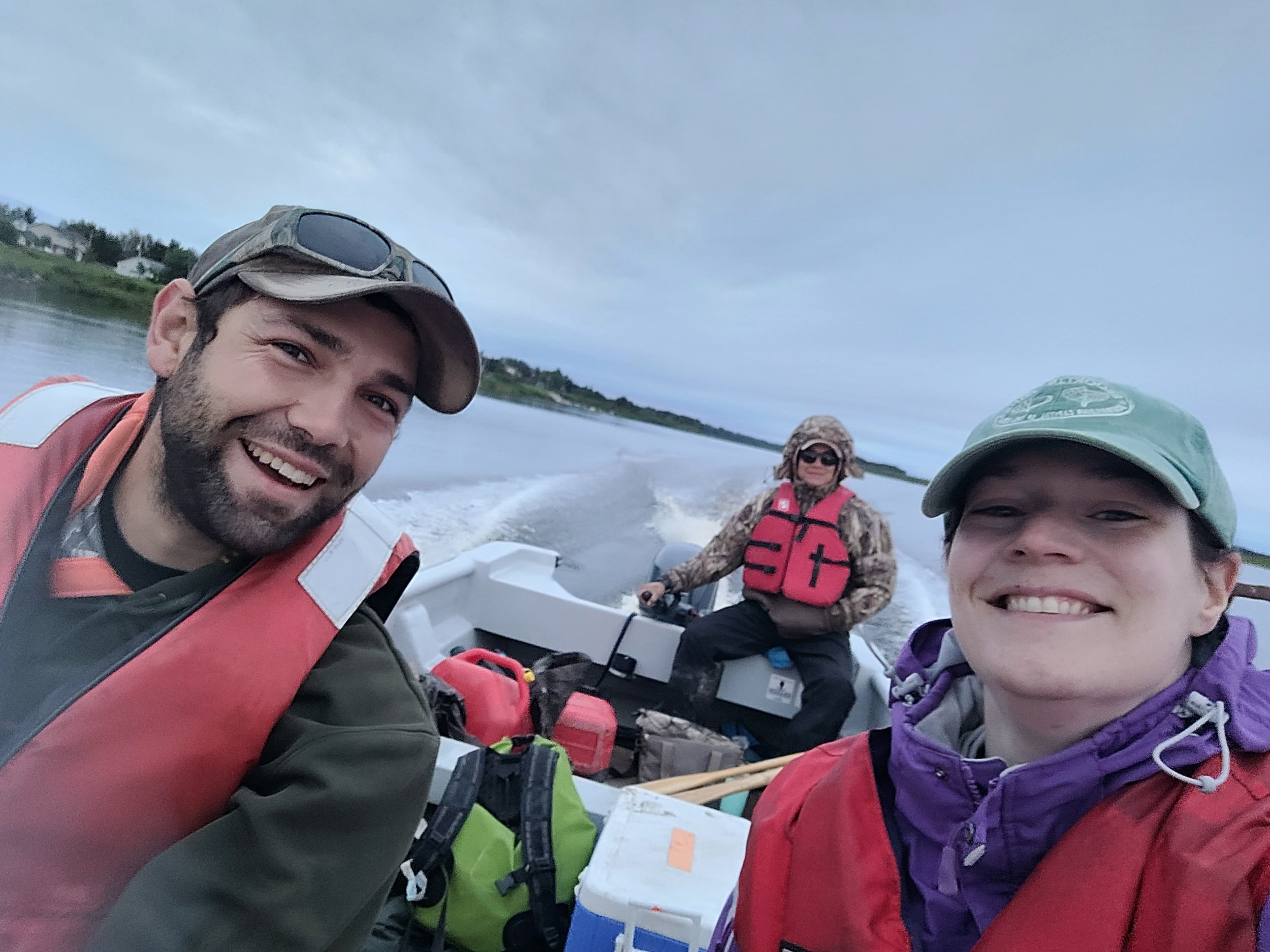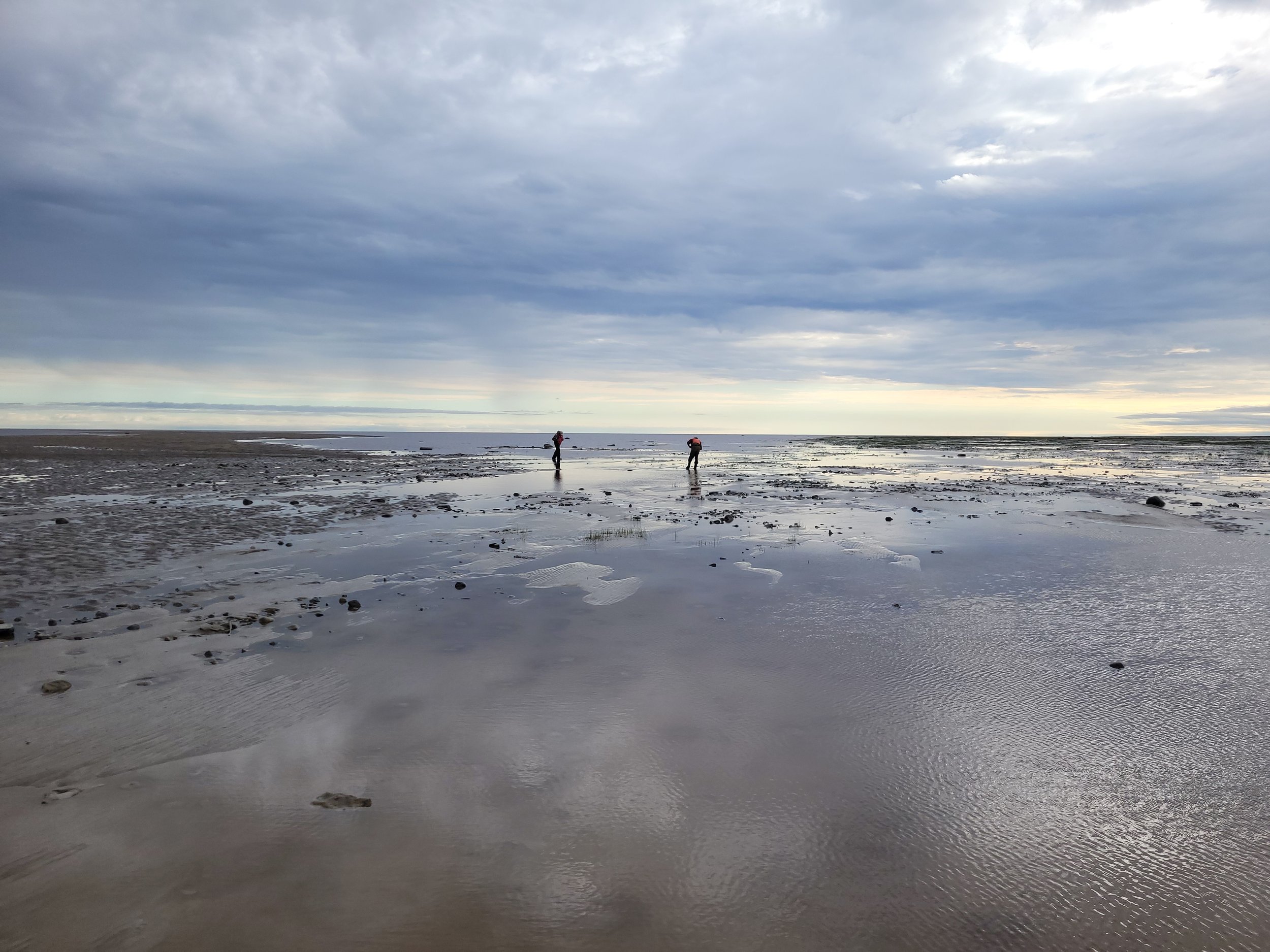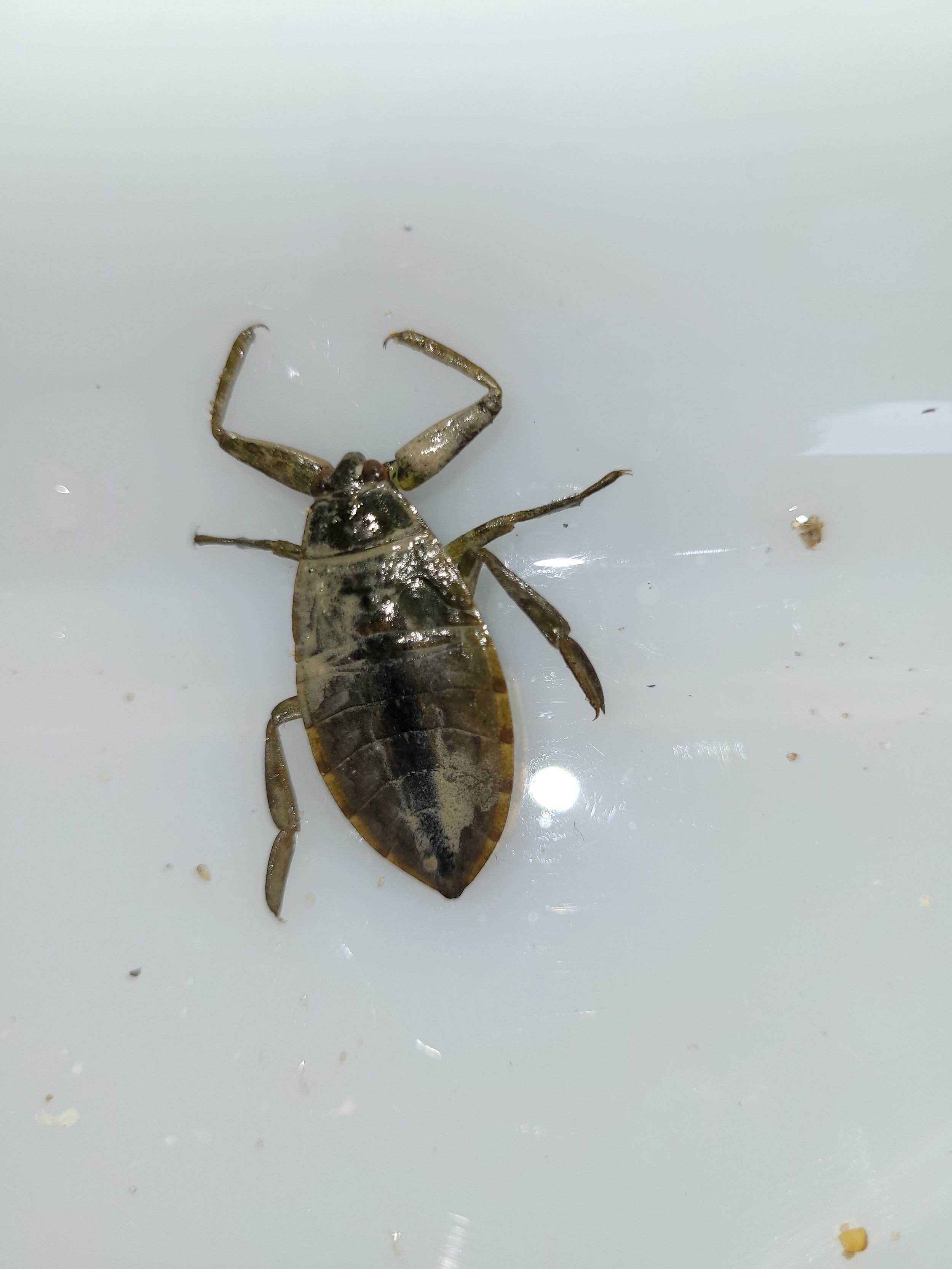LEARNING FROM THE BIGGEST AND SMALLEST ANIMALS IN THE RIVER
Most of our research is on the biggest animals in the river — the lake sturgeon — because they are important to Moose Cree, and because they can teach us a lot about the health of the river. Lake sturgeon are big, long-lived, and migratory, and so they need intact rivers to thrive. Seeing healthy populations of giant lake sturgeon tells us that the overall river is also healthy.
However some of the smallest animals in the river can also tell us a lot about the health of the river. There are a lot of small bugs, and other little creatures like clams, that live in the rocks and silt at the bottom of the river. Some of these creatures can only survive in clean and unpolluted waters. However, other types of creatures are tough, and can live in almost any water. By counting the number and type of these bugs and other creatures — called “benthic invertebrates” by scientists — we can learn about how how healthy and clean the water is. We can also measure levels of contaminants in these small creatures, which can tell us even more about how much pollution is in the river.
This past week, our research team travelled to the North French River, and to the nearby James Bay estuary, and collected many samples of these benthic invertebrates. Next step is to take them back to the lab, and see what they can tell us about the health of the river, and the overall ecosystem!
